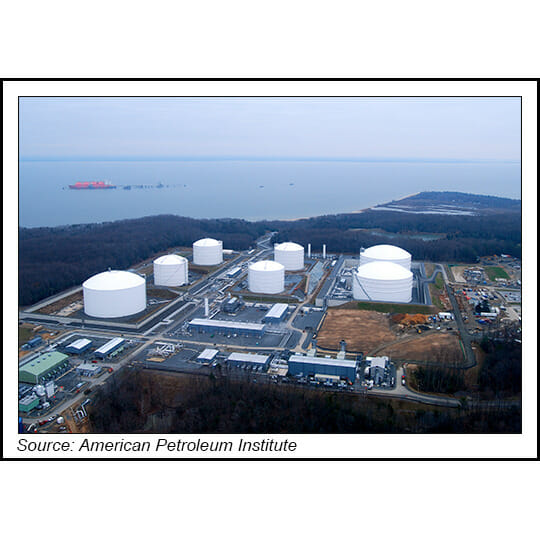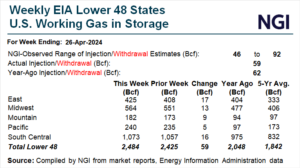Natural Gas Industry Hails US-EU LNG Task Force, Citing Climate, Geopolitical Benefits
The oil and natural gas industry praised the Biden administration Friday announcement of a joint U.S.-European Union (EU) task force to increase liquefied natural gas (LNG) supply to Europe.

The White House said it would seek to expedite approvals of pending LNG export projects, a move long advocated by the industry, in order to help the EU end its reliance on Russian fossil fuels as soon as possible.
“Over the past few months, American producers have significantly expanded LNG shipments to our allies, establishing Europe as the top US LNG export destination,” said the American Petroleum Institute’s (API) CEO Mike Sommers.
He added, “We stand ready to work with the administration to follow this announcement with meaningful policy actions to support global energy security, including further addressing the backlog of LNG permits, reforming the permitting process, and advancing more natural gas pipeline infrastructure.”
The Center for Liquefied Natural Gas’ (CLNG) Charlie Riedl, executive director, praised the administration’s “commitment to supporting our European allies and its recognition of the importance of U.S. LNG to global energy security and climate leadership. We look forward to working with the administration in its effort to streamline the regulatory process for U.S. LNG, enabling us to establish a virtual LNG pipeline to Europe that accelerates our ability to help our allies and the clean energy transition.”
Riedl added, “We are fortunate to have an abundant supply of natural gas in the United States, which has enabled us to become Europe’s largest supplier of LNG throughout its energy crisis, as well as the world’s largest exporter of LNG.”
Industry groups this week noted that 17 applications for additional LNG capacity were awaiting approval by the Department of Energy (DOE).
“To move forward and meet the stated goals of 15 Bcm this year and 50 Bcm by 2030, we will need regulatory certainty and FERC and DOE’s assistance,” Riedl continued. “The LNG industry can build, but regulators must do their part to help expedite the essential infrastructure that is needed here and in Europe to meet these ambitious goals and help our European allies.”
The Federal Energy Regulatory Commission this week also walked back the rollout of controversial updates to its policies for reviewing natural gas infrastructure, which had drawn criticism from the industry and lawmakers.
The American Exploration and Production Council’s Anne Bradbury, CEO, welcomed the U.S-EU task force, highlighting the energy security and environmental benefits of natural gas.
“When it comes to climate, the benefits of American energy are unparalleled,” said Bradbury. “U.S. oil and natural gas operations adhere to the highest level of environmental regulations in the world.”
She added that U.S. LNG “is the cleanest, most reliable LNG in the world. By exporting this low-emitting fuel to our friends in Europe, we provide a reliable energy source that supports the net-zero by 2050 goals that many European nations have set.”
The U.S. Chamber of Commerce’s Marty Durbin, president of the chamber’s Global Energy Institute, called the announcement “an important signal that must be followed up with policy and actions to encourage domestic oil and natural gas production and associated pipeline and export infrastructure.”
“A broader long-term strategy built around energy security and accelerating the clean energy transition is also required to face global threats.”
Not all observers were as optimistic, however. In a note to clients on Friday, researchers at ClearView Energy Partners LLC expressed skepticism about the efficacy of the task force.
“Today’s plans may not survive the test of battle,” the ClearView team said. “For one, Russian President Vladimir Putin may prove unwilling to abet the smooth extinction of European demand for Russian energy by maintaining current gas supplies. Second, facts on the ground in Ukraine could change minds in Brussels (and Berlin) about continued purchases.”
Rystad Energy analysts, meanwhile, said the task force pledges, if fulfilled, should underpin at least 35 million metric tons/year of new US liquefaction capacity. This would be equivalent to seven trains at the Sabine Pass liquefaction facility and require up to $35 billion of investment, the Rystad team said.
© 2024 Natural Gas Intelligence. All rights reserved.
ISSN © 1532-1231 | ISSN © 2577-9877 | ISSN © 1532-1266 |


